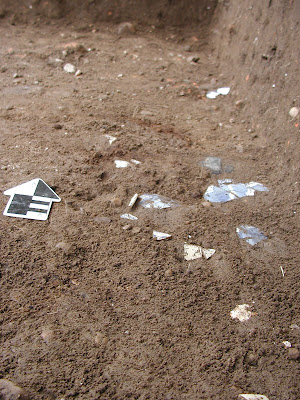As I mentioned yesterday, we would like to find the foundations of as many buildings as possible so we can assess just how the few maps we have match the archaeological record. However, the foundations of Port Tobacco are not easily found. The reasons for this include recycling and agriculture.
Our excavations to date have encountered remnants of several foundations. These remnants are very thin deposits of brick rubble, mortar, plaster, and/or building stone. The bulk of these foundations have clearly been recycled for reuse in other buildings. Complete bricks and stones have certainly been removed after the demolition of the original buildings or we would be encountering more significant foundation remains.
These foundation remnants have been further modified by agriculture. The fields that we have been working in have been plowed many times through the years. Plowing breaks up the soil and anything that is in it. This further reduces the depth of our foundations and their clarity.
Below you can see all that remains of one of the two buildings we uncovered in the Indian King Hotel area, the southeast corner of the village green. Interestingly the foundation remnants here are at an angle to the village green as it exists today and as it is depicted on the late 1800s maps that we have.

-April



























